Send Frequency 2021: Exploring Messaging’s Impact on App Usage, Industry by Industry
Published on April 02, 2021/Last edited on April 02, 2021/13 min read
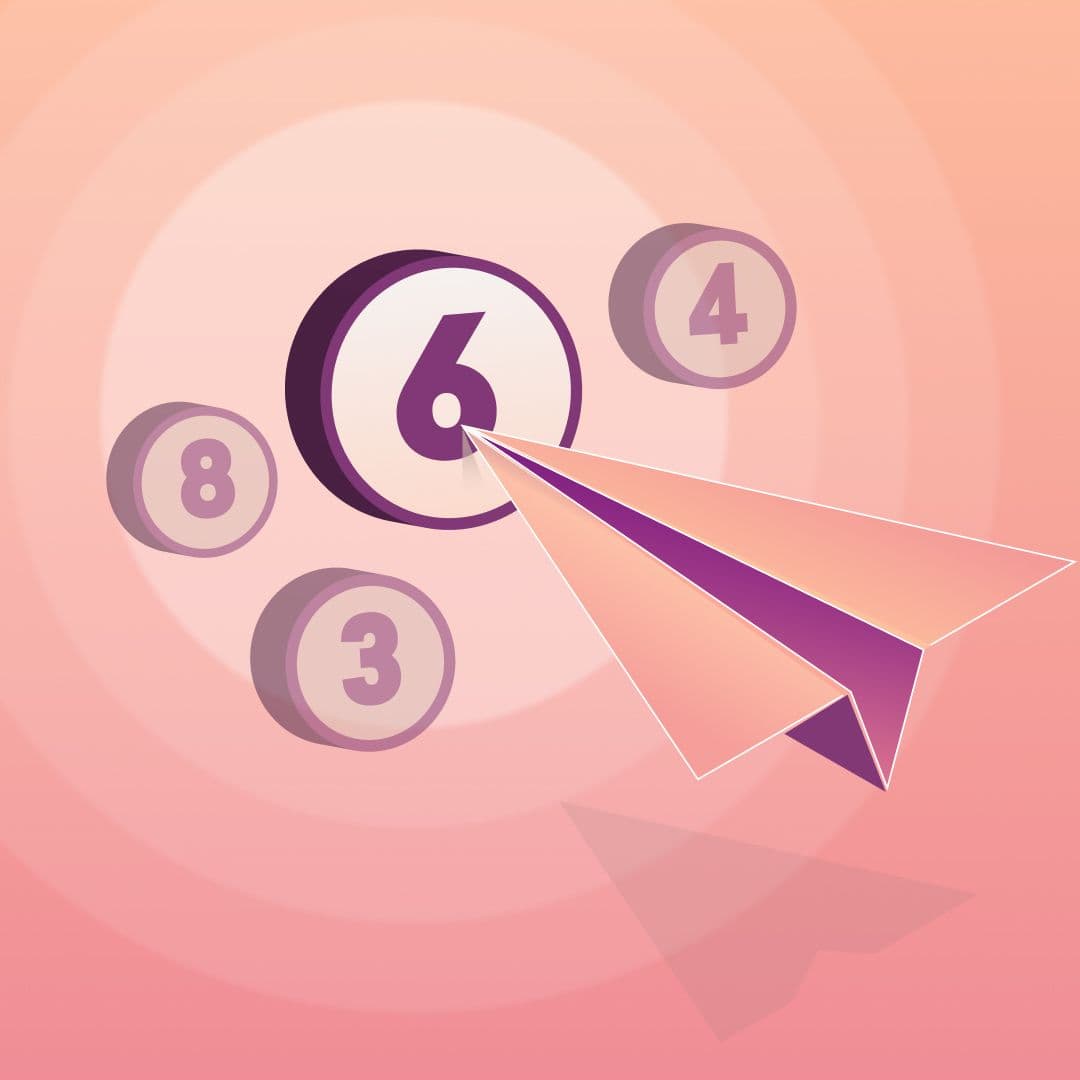

Brendan O'Connor
Customer Insights Analyst, BrazeDuring 2020, Braze sent more than a trillion messages on behalf of customers, giving us a unique window into how send frequency can impact results. In that spirit, we offer these analyses as a starting point for your brand's own frequency testing and optimization work, rather than as a one-size-fits-all optimal benchmark that all brands should match. Remember that many factors can influence frequency, including the use of behavioral and transactional triggers, the segments a given user belongs to (for instance, more engaged customers may be open to more messages), the way a given audience is split within an industry, and the specific messaging strategies a particular brand is using.
Send frequency matters. As anybody who’s ever received a dozen emails from a single brand in a single day knows, the difference between the right number of messages and too many (or too few, for that matter) can be the difference between the success and failure of your marketing campaigns.
But not every brand is trying to optimize their messaging campaigns to drive the same outcomes. Back in 2019 we took a look at the ideal send frequency for push notifications, emails, and cross-channel messages overall. This year, we decided to dig a little deeper, exploring the impact of send frequency first on purchases (see that article here) and now on the app usage of message recipients.
Many brands focused on driving app session engagement host different types of content and media, enable healthier lifestyles, or allow people to connect with others online. These recommendations should help your brand ensure that users always come back for more by sending them the right amount of messages each month. With that in mind, we’ll be digging into send frequency for the following industries:
- Music and Audio
- TV and Video Streaming
- Gaming
- Education
- Gambling
- News, Magazines, and Catalogs
- Books, Reference, and Comics
- Communication/Chat/Text
- Social Media
- Dating
- Health Management (Personal)
- Fitness
- Mental Health & Mindfulness
1. Media and Entertainment
There’s a long tradition of content-focused businesses finding ways to drive (and monetize) audience engagement in order to support their business models, going back at least to the rise of newspapers and radio stations. But in today’s increasingly fragmented landscape, grabbing and holding customers’ attention is arguably more of a challenge than ever before. A strong messaging program can do a lot to drive stronger results, but the strength of your outreach can be undermined if you don’t get your send frequency right.
Music and Audio Brands: Tuning in to the Right Message Frequency
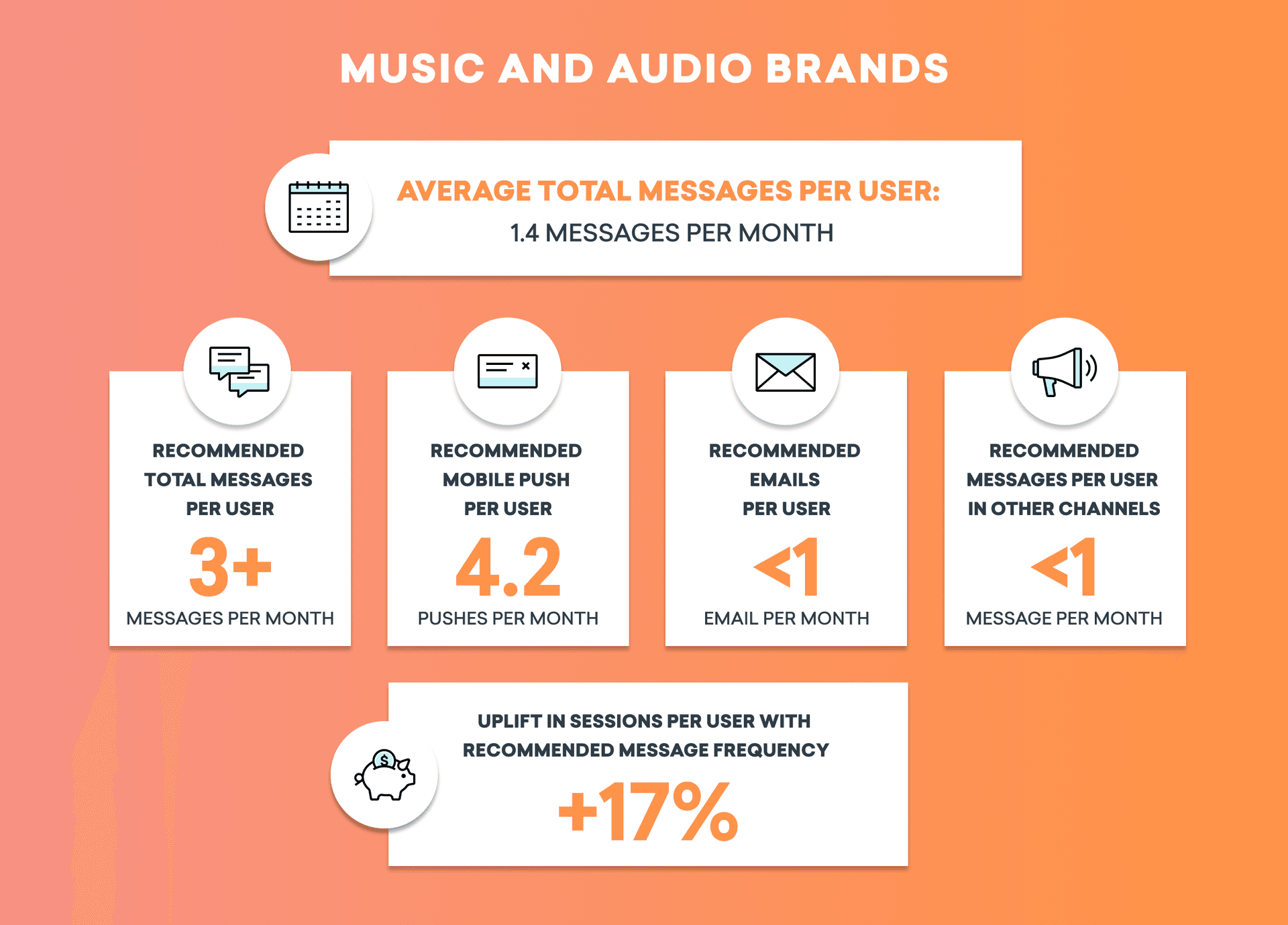
For millions of individuals around the world, listening to music at home has been a welcome reprieve from the craziness of 2020. Listeners today have a wide variety of options to choose from and can easily engage with musicians from all over the world—making today’s streaming environment a dream come true for music nerds. Similarly, music brands have so much content at their disposal that it’s no surprise there is still much room for growth.
The average music and audio brand sent only 1.4 messages per month, but brands that sent three or more messages per month saw a 17% uplift in the average number of sessions per user. There are lots of creative, artist-driven ways to message your users to find out about new releases, or catalogue releases seeing a resurgence in interest. Try taking your message frequency from andante to allegro and see if your users are singing a different tune.
TV and Video Streaming Brands: Time to Cancel Excess Messages?
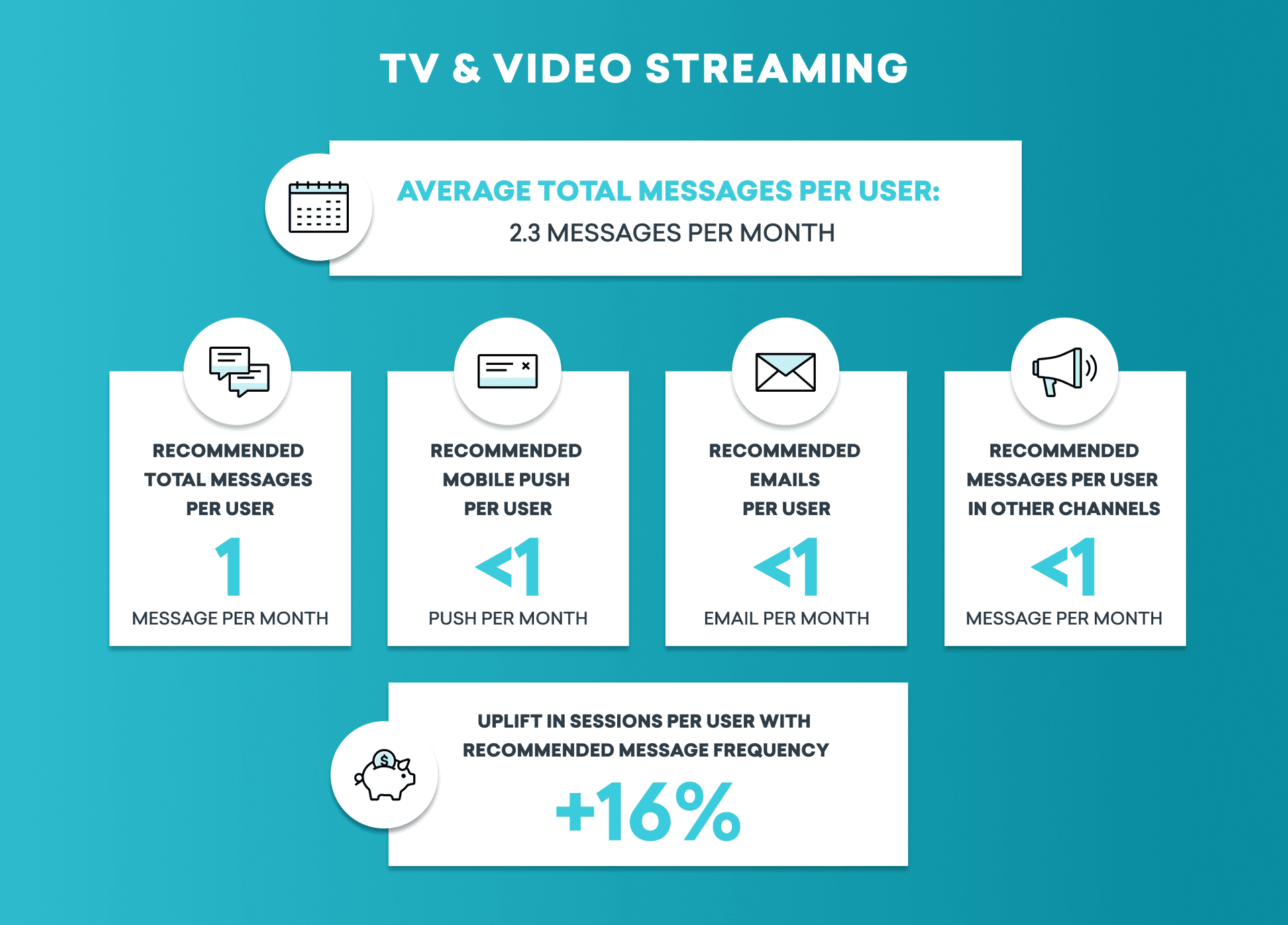
What can we say about online streaming that hasn’t been said already? It’s a ubiquitous presence in 2021, showing absolutely no signs of slowing down. The rise of streaming over the past decade has completely changed the way consumers enjoy stories and different kinds of content, leading to a cambrian explosion of scripted and unscripted content.
But while the growth is impressive, brands should be wary about messaging their customers too frequently. The most successful brands sent only one message per month to their users, about 60% less than the industry average. Given the amount of coverage that many popular shows get outside of streaming platforms, many customers may already be getting a lot of messaging around their favorite shows and movies. Using tools like the Braze platform’s Intelligent Selection, Intelligent Timing, or dynamic content personalization or segmentation features can allow you to get the most out of a reduced messaging cadence, boosting impact and reducing the strain on inboxes and notifications centers.
Gaming Brands: Beat that (Messaging) High Score
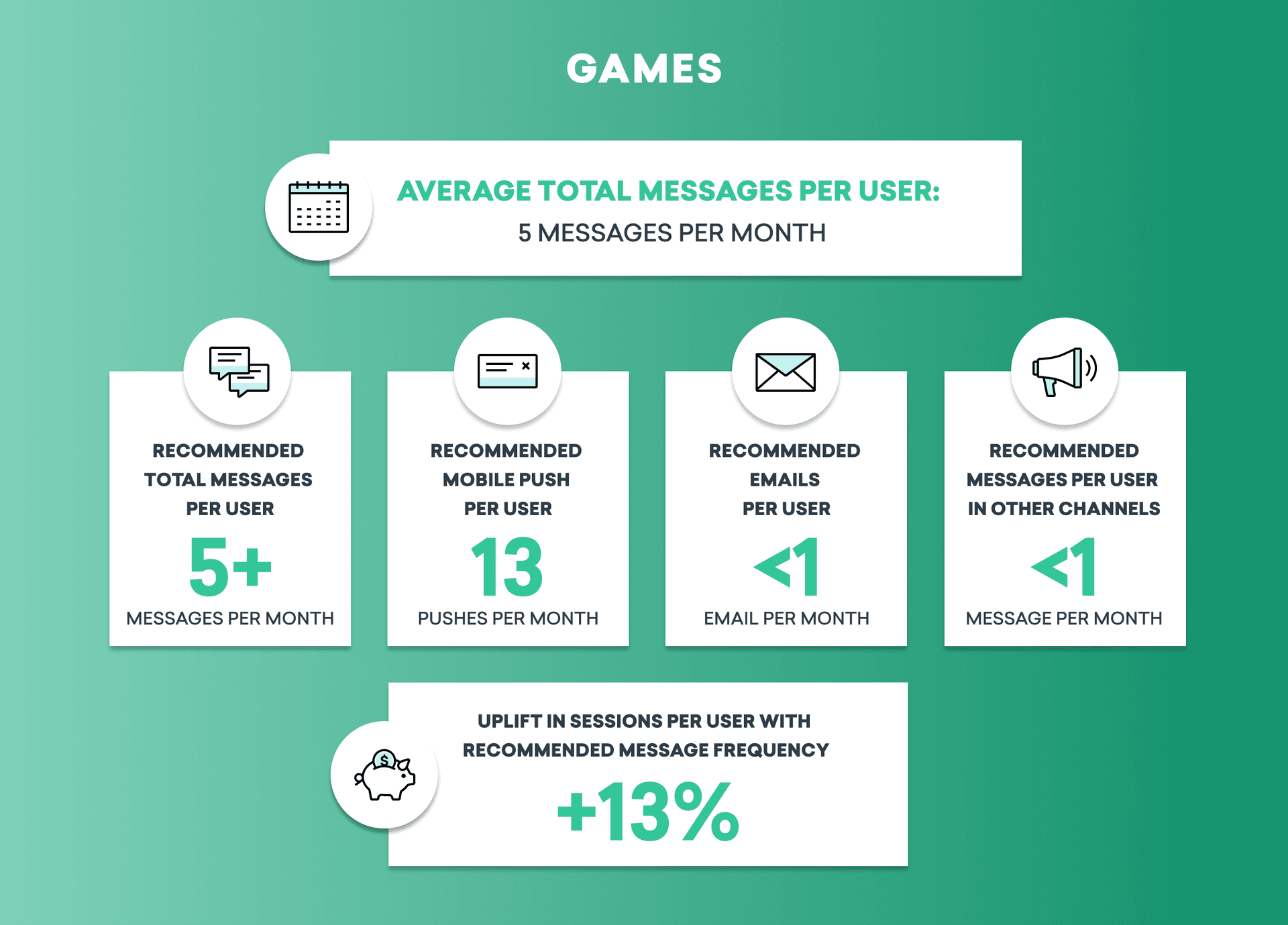
Gaming is another industry seeing sizable tailwinds as a result of the widespread social disruptions and lockdowns associated with the COVID-19 pandemic. Today, there are many ways for users to play their favorite games—from consoles and PCs to mobile devices and even streaming!
Although the traditional image of a “gamer” is becoming more and more outdated, what hasn’t changed is the enthusiasm and fervent nature found in the gaming ecosystem. The average gaming brand sends about five messages per month, but in our analysis we found that sending more than five messages per month is appropriate in the right contexts, and can improve session engagement. Brands sending five or more messages per month saw session engagement that was 13% higher than the industry average. Your next quest as a gaming brand should be to find ways to thoughtfully level up your message frequency for your users!
Education Brands: Put Higher Frequency on Your Syllabus
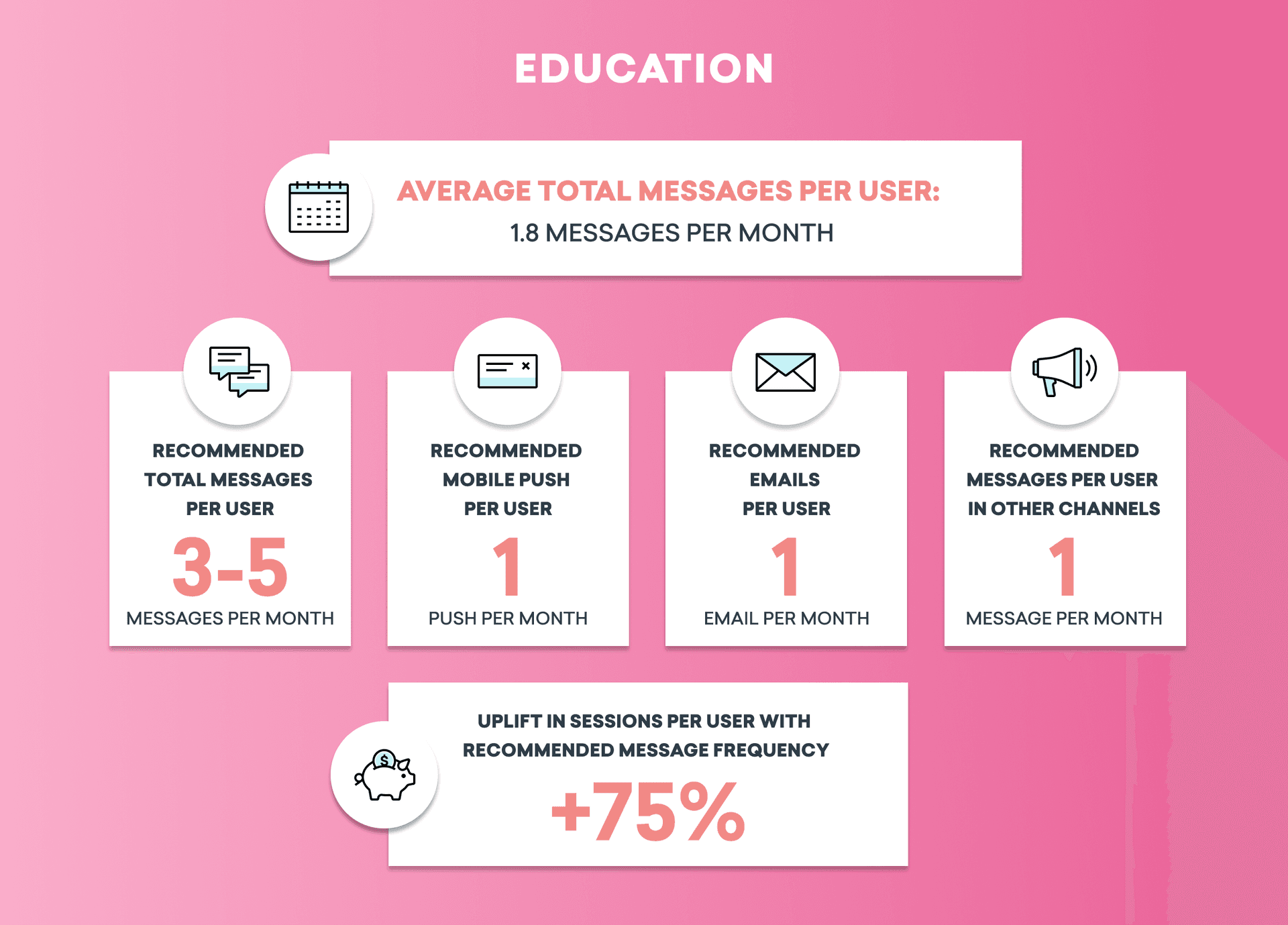
People all over the world have looked to a rapidly shifting online education landscape to pick up new skills, hobbies, or even full degrees during the pandemic. There are more ways than ever to learn online, both on the web or even mobile devices. But our analysis found that education brands could use a bit of schooling themselves when it comes to message frequency.
The average message frequency for education brands is 1.8 messages per month. However, the most successful brands when it comes to session engagement sent 3–5 messages per month, roughly double the industry average. Brands in this frequency range saw an increase of about +75% in sessions per user, so make sure your learners stay on track by driving them back to your platform!
Gambling Brands: Know When to Fold ‘Em, Messaging-Wise
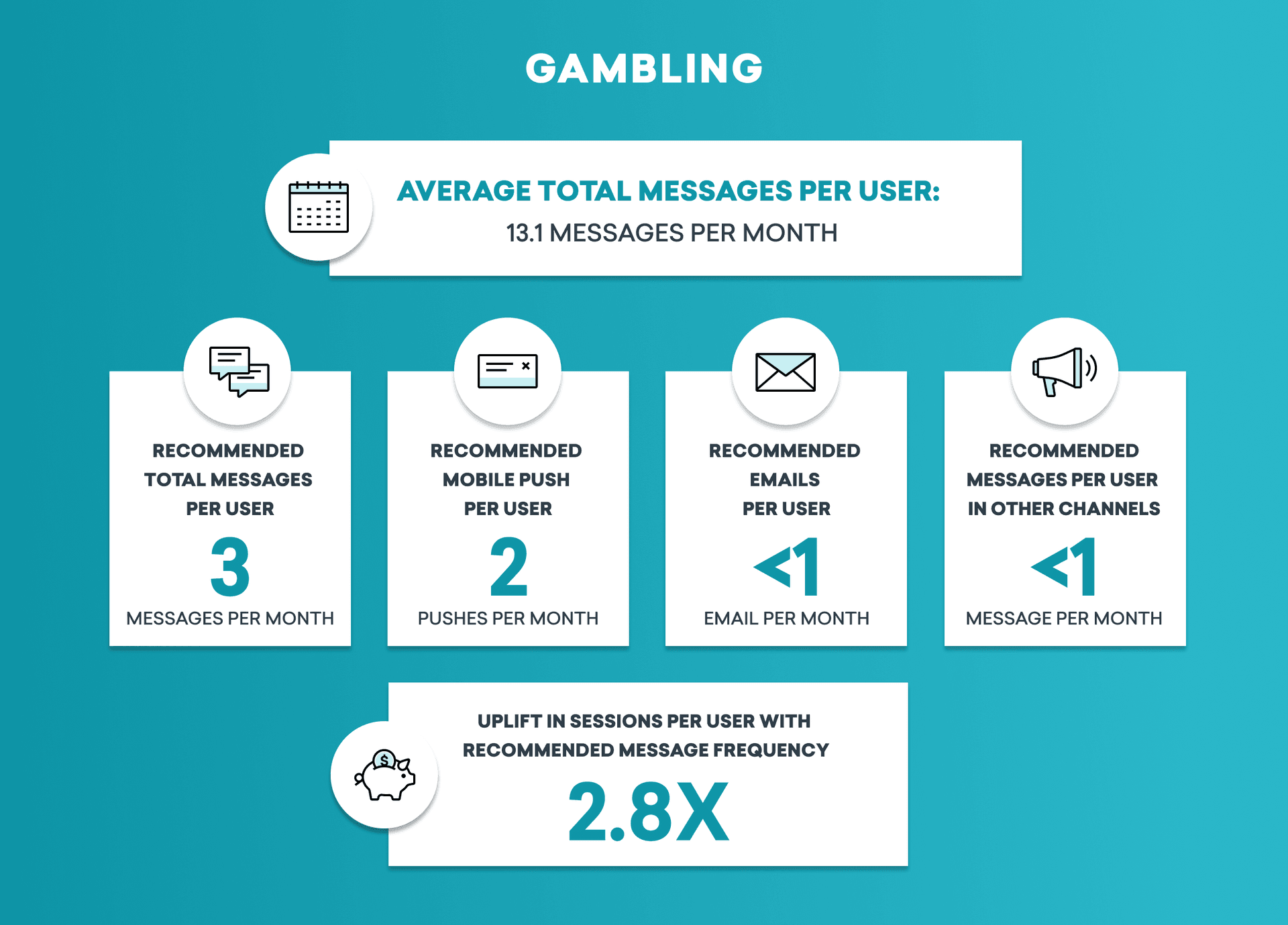
Legalized gambling is slowly expanding in both the United States and beyond. But while the growing number of gambling platforms and venues suggests that betting is popular with consumers, the kinds of messaging frequencies we’re seeing in the gambling space may not be.
Why? Well, the average brand in this space sends about 13 messages a month, easily the highest of any industry we looked at. But our analysis found that sending three messages per month was actually much more effective at driving session engagement, with users receiving this message frequency logging on 2.8X more often than the industry average. So make sure you’re not going all-in on your messaging when it’s not necessary!
News, Magazine, and Catalog Brands: Not Every Message Should Make the Front Page
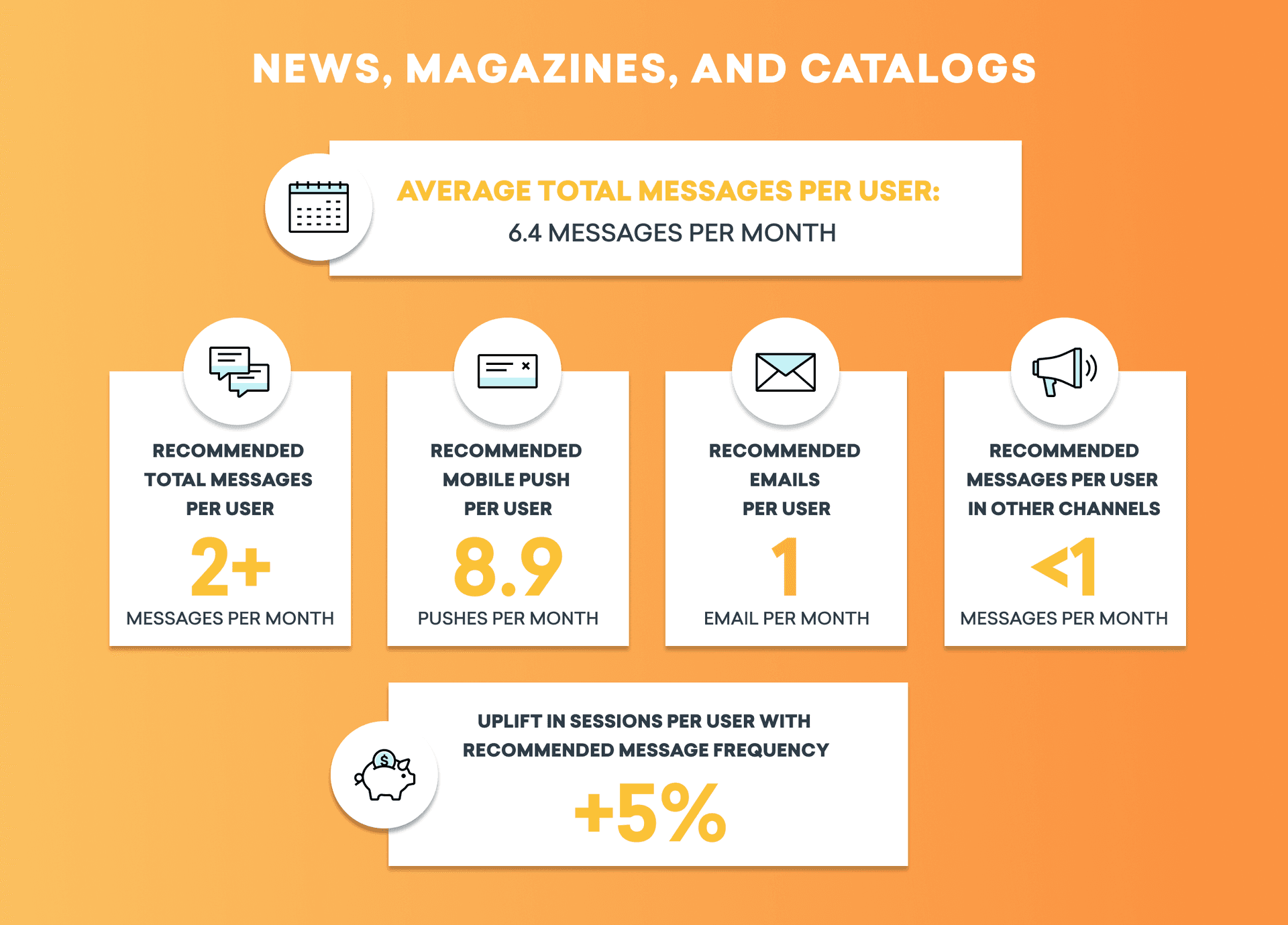
News, magazine, and catalog companies are an interesting case when it comes to message frequency. Although our recommended frequency is 2+ messages per month, we’ve found that the distribution of session engagement has very fat tails, with a group of customers towards the upper end of the range seeing higher engagement on about nine mobile push per month. Do some research to see which of your customers would prefer a more self-served media diet, and who the infovores are who just can’t get enough of your breaking headlines! Brands who brought the headlines to their customers at the right time saw a 5% increase in their session engagement over the past year.
Books, Reference, and Comics Brands: An Average Frequency Bookended by Ideal Rates
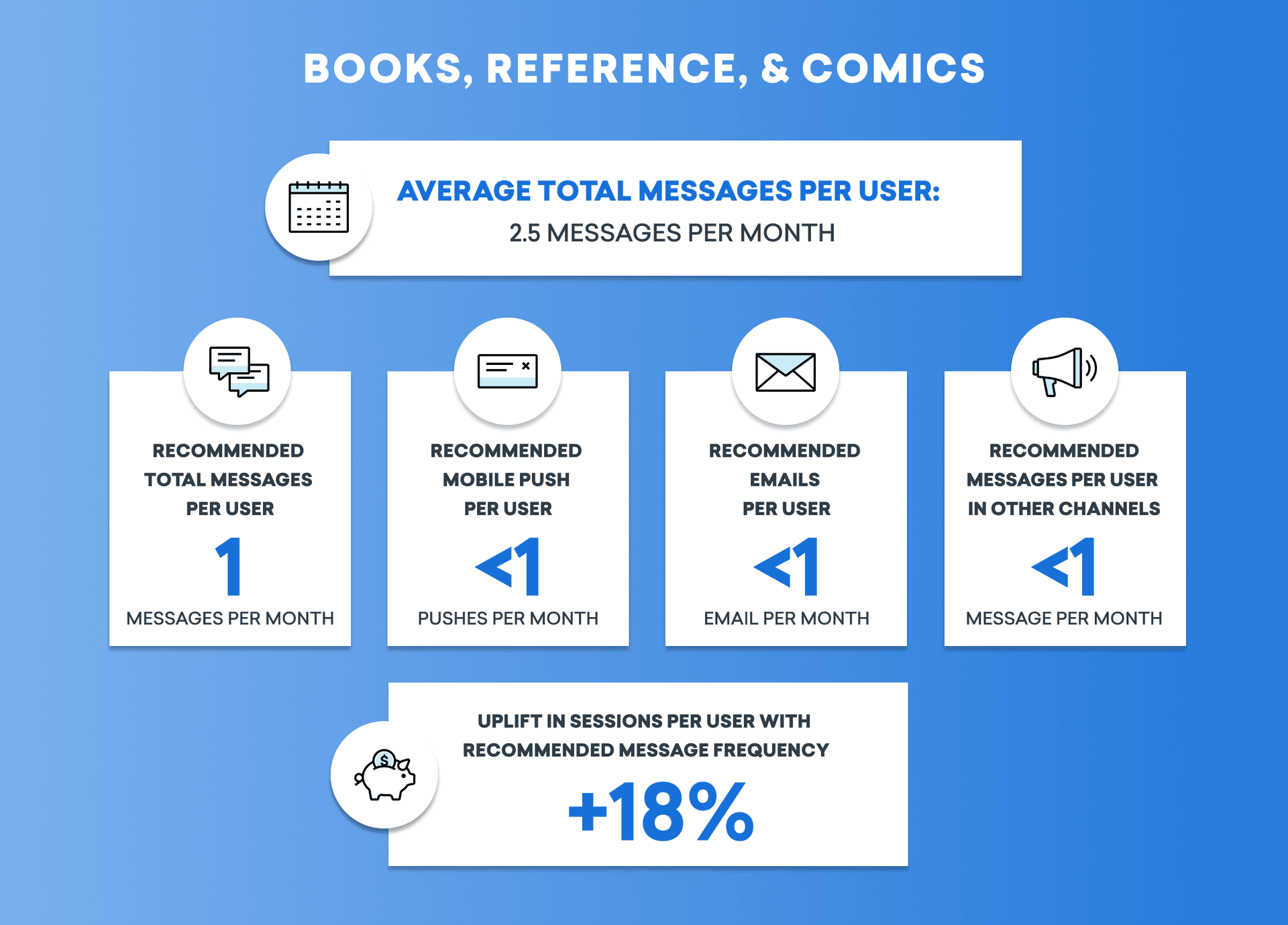
Hopefully many of you have made a dent in your reading backlog during the pandemic. Publishing brands face tough competition for attention spans. Do they need to ramp up their messaging in order to reach enough eyeballs? It turns out that the most successful publishing brands sent only one message per user per month. When someone has a page turner going, they don’t need much assistance getting back to it. Brands in our recommended frequency tier saw a boost of about 18% with regards to session engagement. If someone has been avoiding their New Year’s resolution, give them a nudge once per month to help them experience the transcendence of the printed word.
2. Social Media and Communications
Unlike content-focused brands, which have a pedigree—and a business model—that dates back over a century, social media and messaging brands are resolutely modern, building massive audiences over the past decade or so. And because these brands have largely grown up in our always-on, mobile-first era, messaging has been an essential part of their playbook from the very beginning. But that doesn’t mean they’re always on the right track when it comes to sending frequency...
Communication/Chat/Text Brands: Word Is, You’re Right on Track
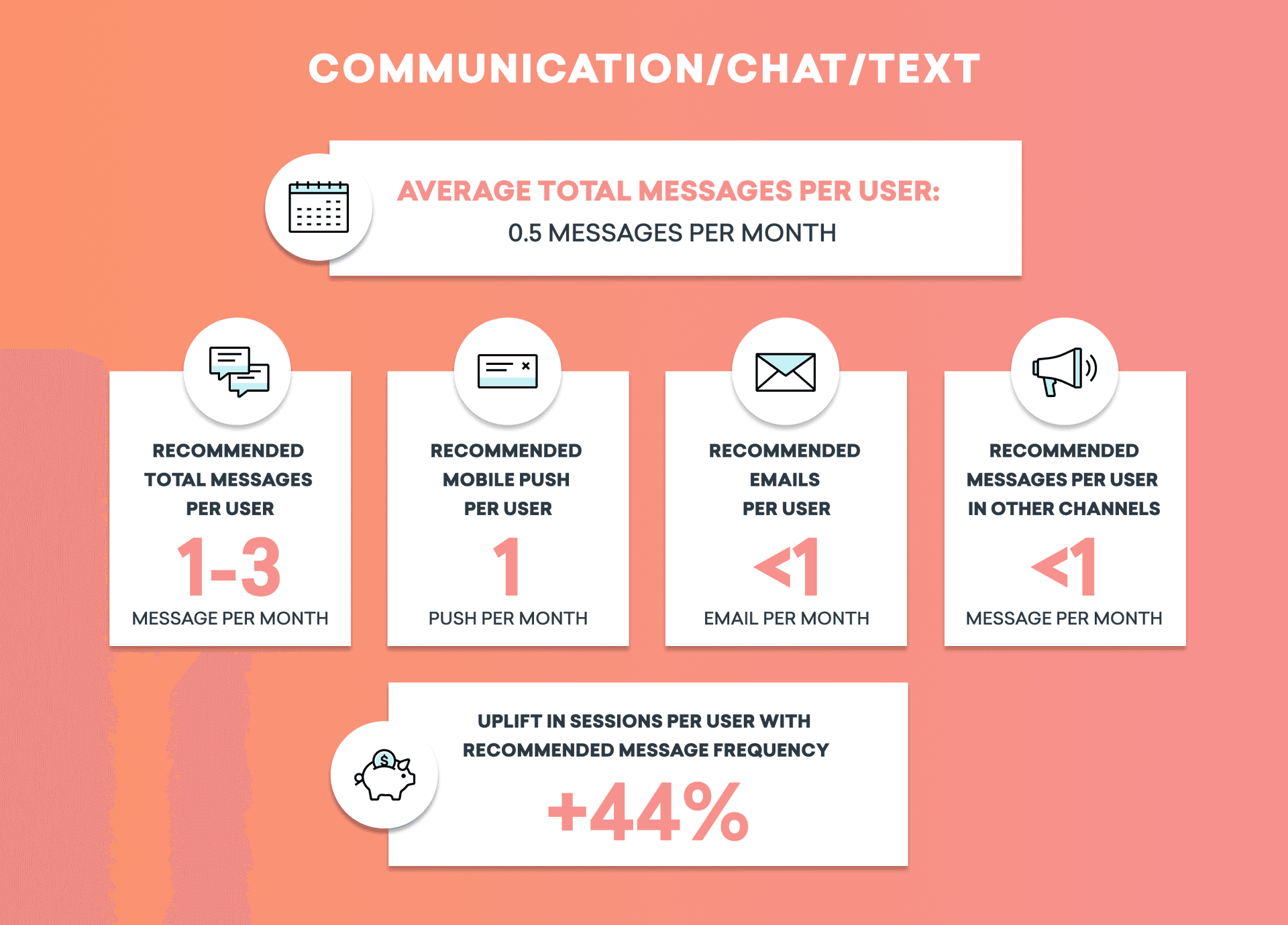
Okay, we’re getting a bit meta on this next industry. How many messages should a message brand send if a message brand would message messagers? If you’re still here, the answer is actually not that many!
Communication brands seem to already know that customers come to these apps to communicate with one another, with the average message frequency being about one message every two months. However, brands that messaged their users slightly more, about 1 - 3 messages per month, did see some improvements in session growth. Users that fall into that tier see about 44% more sessions than the average user, so try being a bit more proactive when it comes to letting your customers know when new tools and features launch, allowing them to engage with their network in fun ways!
Social Media Brands: Turns Out, Users Would “Like” More Messages
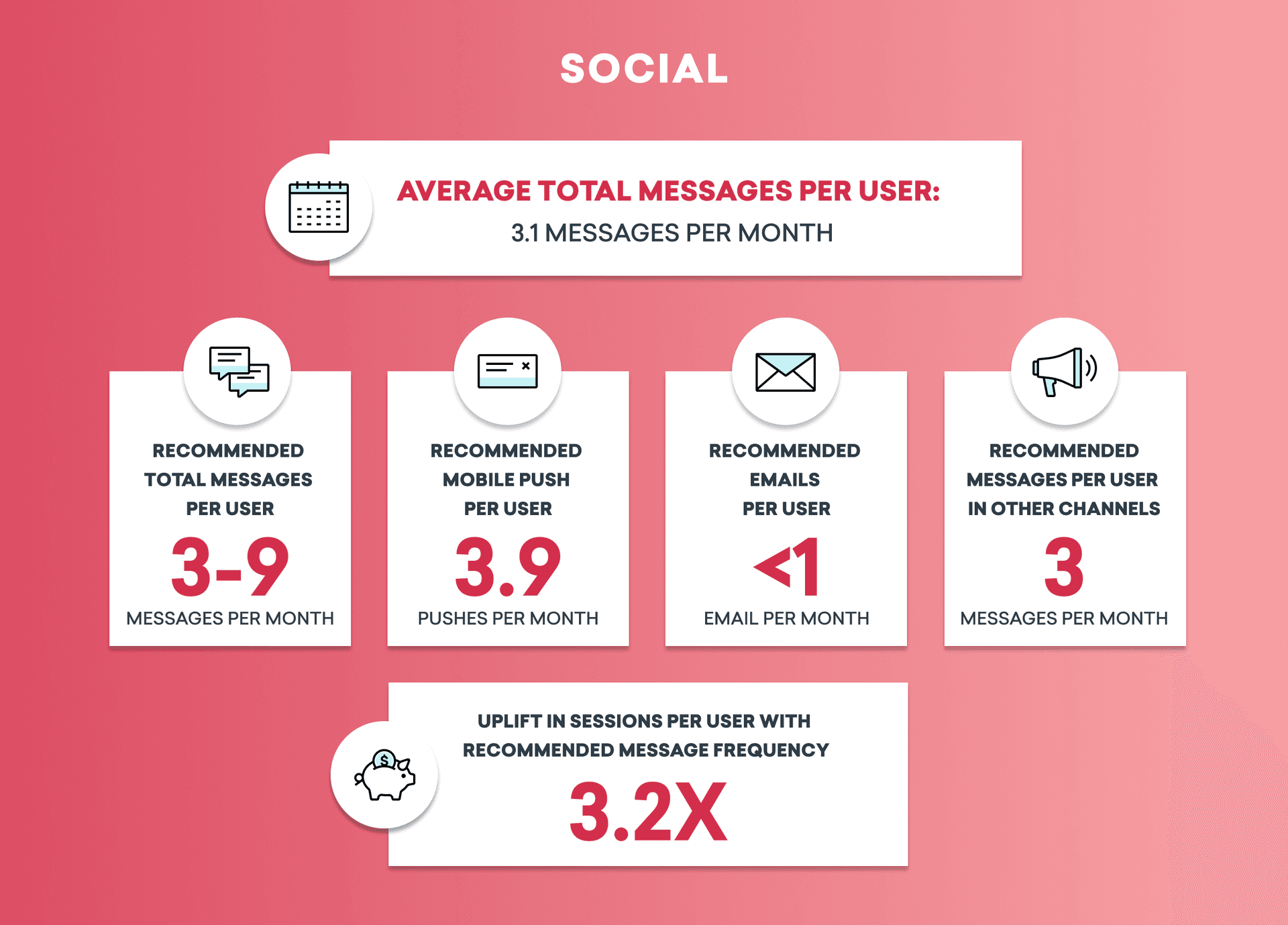
We’ve come a long way from Friendster. These days, there are social media companies meant to connect people from a wide range of interests—from professional networking, creating memes, or sharing new cutting-edge outfits. There are a plethora of ways these days to engage with people online who share your interests, and brands could be doing more of this when it comes to keying people in to what’s going on on their platforms.
The average social media brand sends about 3.1 messages per month, which is toward the lower end of the recommended frequency of about three to nine messages per month. Users in this message tier saw an increase in sessions by about 3.2X, so if something fun is trending on your platform, make sure your users don’t miss out!
Dating Brands: When Message Frequency is a Perfect Match
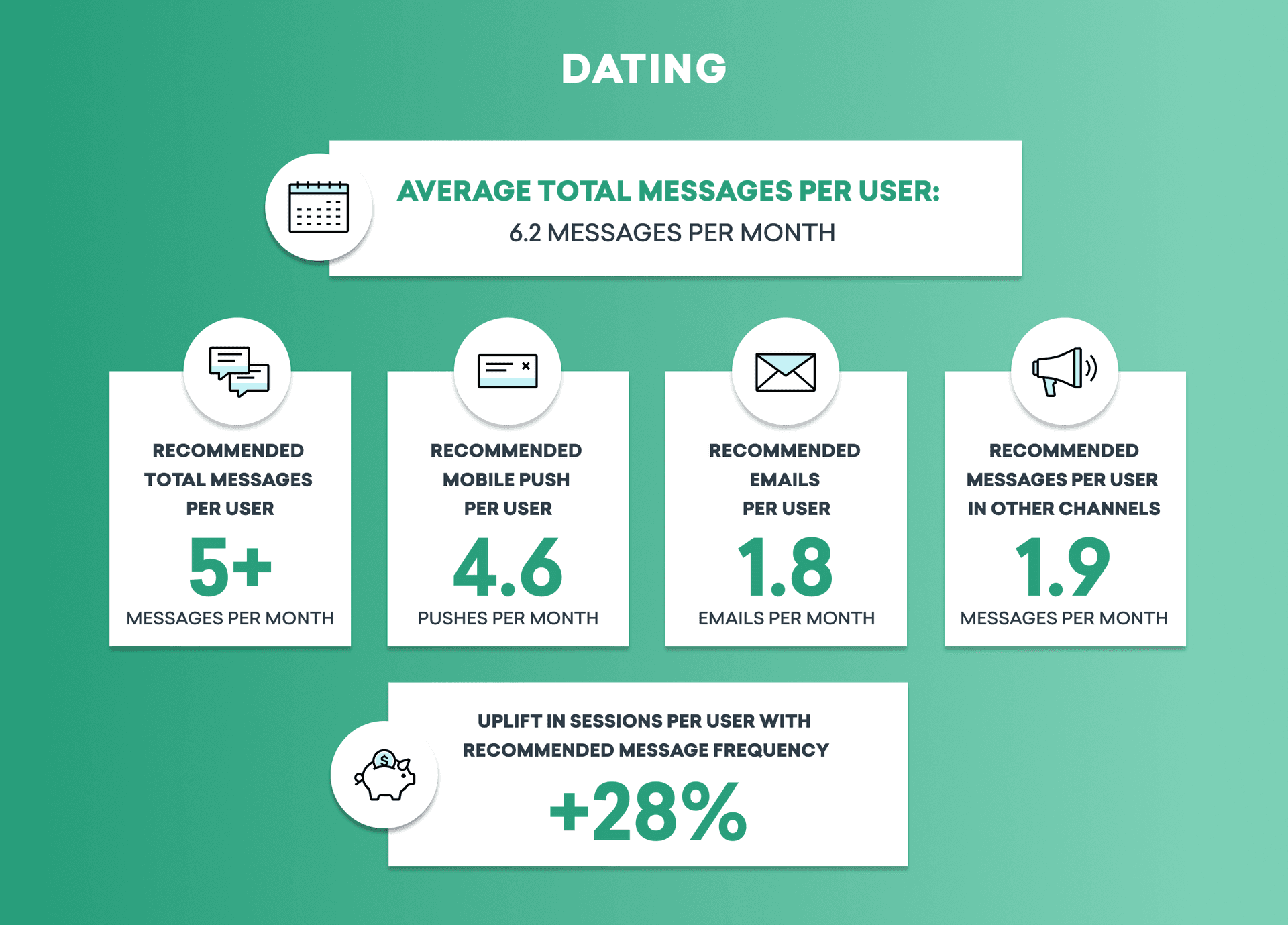
Online dating is now the most popular way for new relationships to form in 2021. Brands in this space have seen accelerated growth given that people can no longer meet through friends or at a bar. Dating brands are already getting a perfect match with their customers and message frequency. The average customer gets about 6 messages per month, and our recommendation is 5+ messages per month. Customers in this segment had 28% more sessions than the industry average, which means more time to spend finding your special someone(s)!
3. Health and Fitness
With the rise of COVID-19, we’ve seen an unexpected boost in the number of consumers leveraging digital platforms to maintain their mental health and hit their fitness goals in a challenging global environment. But while finding ways to keep customers engaged on the web and mobile are key for companies in this vertical, not every message—or message frequency—is the right fit for users.
Health Management (Personal) Brands: All Things in Moderation
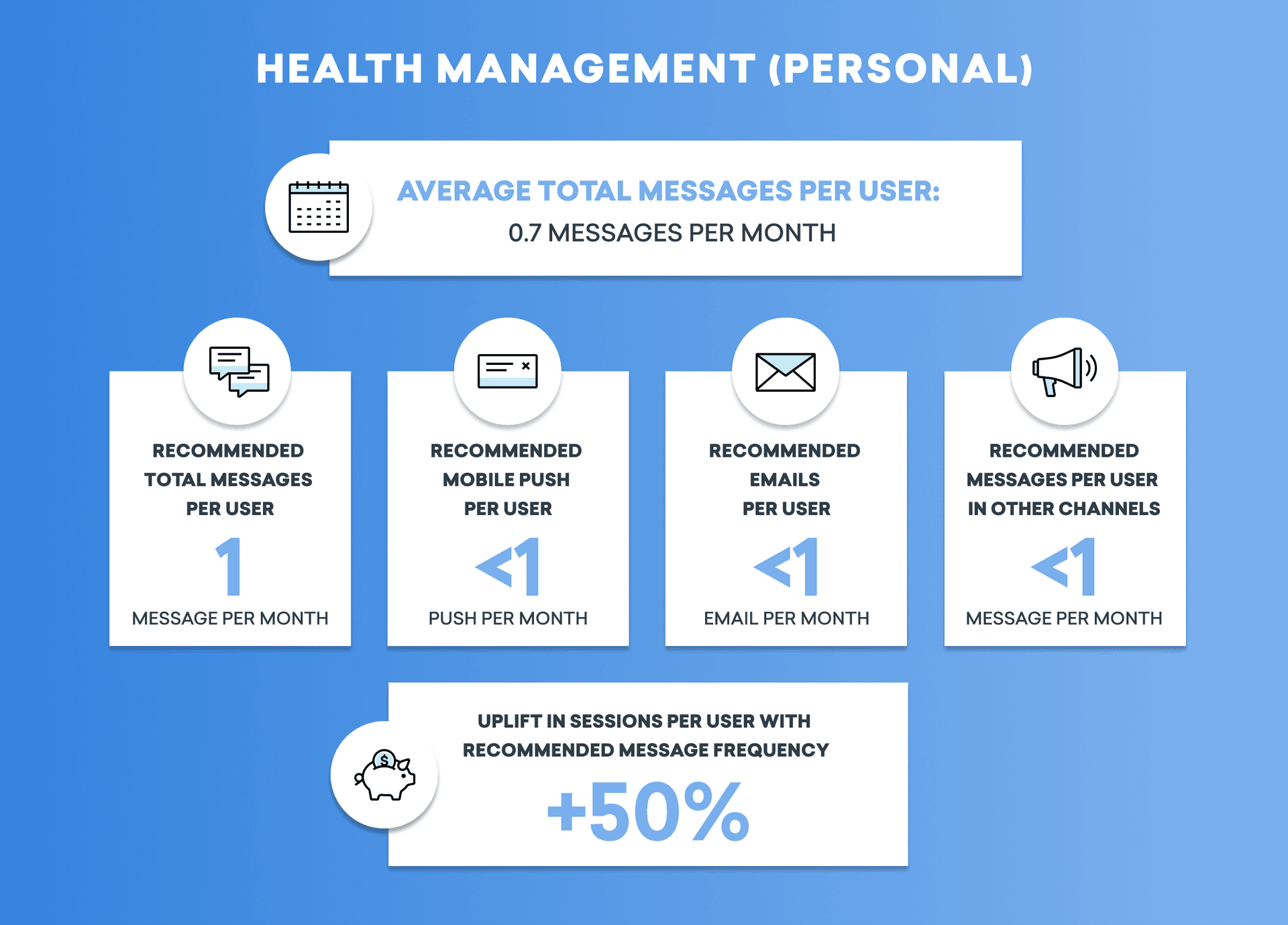
We’ve seen a revolution in the digital health space over the space years, with so many new avenues for online health support springing up and more and more consumers discovering the wide range of existing options out there to manage their health concerns, both in a group setting or with a licensed professional.
But this meteoric growth in interest and options in the health management industry shouldn’t lead to a similarly massive growth in the number of messages you’re sending. Given that there’s already a fair amount of urgency around personal health, we recommend that brands in this industry send about only one message per month; however, the average customer gets one message about every one and a half months, so there is a bit of wiggle room to nudge up your average message frequency. At that frequency, customers see an 50% uplift in sessions per user, which can do a lot to keep them engaged with your brand. The upshot? Checking in with your users the right amount is a great way to nudge them to having a healthier and happier 2021.
Fitness Brands: Pump Up Your Message Frequency
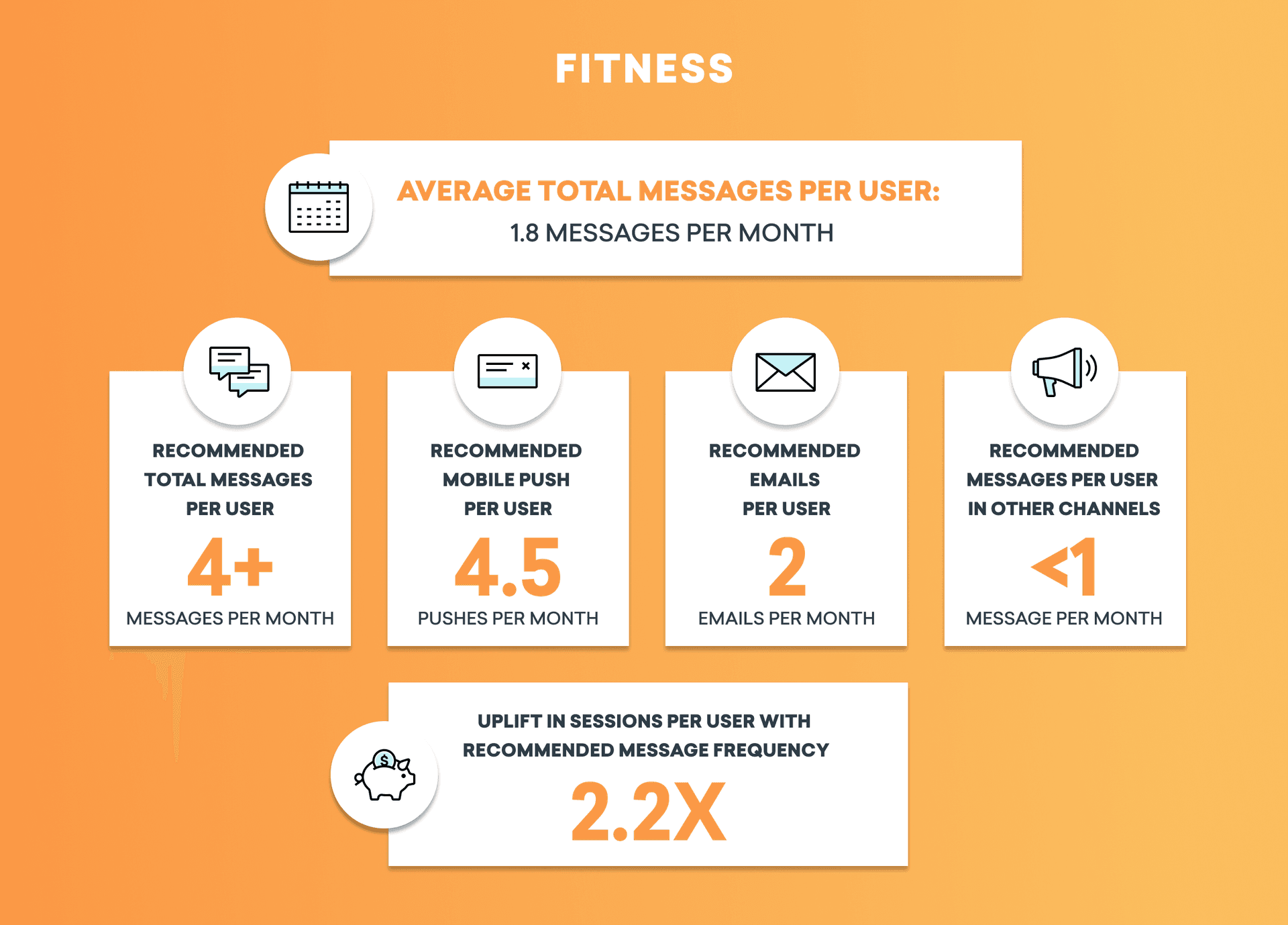
People who want to live an active lifestyle have a wide range of options to choose from when it comes to finding new workouts, enhancing the in-person exercise experience, or participating in social workouts from home. These digital platforms give anyone the opportunity to join a positive, encouraging environment that works for their schedule and body type. Fitness brands need to ramp up the intensity of their messaging to match!
The average fitness brand sends about 1.8 messages per month, which is less than 50% of our recommended message frequency of 4+ messages per month—which, in our view, is neither yoked, nor shredded. Users that receive at least four messages per month have 2.2X more sessions than the average user. Try to find some critical inflection points in your users’ journey in achieving their fitness goals, and supplement them with some more messaging so that they can stay on track!
Mental Health & Mindfulness Brands: Just Breathe...And Maybe Cool It With the Messages
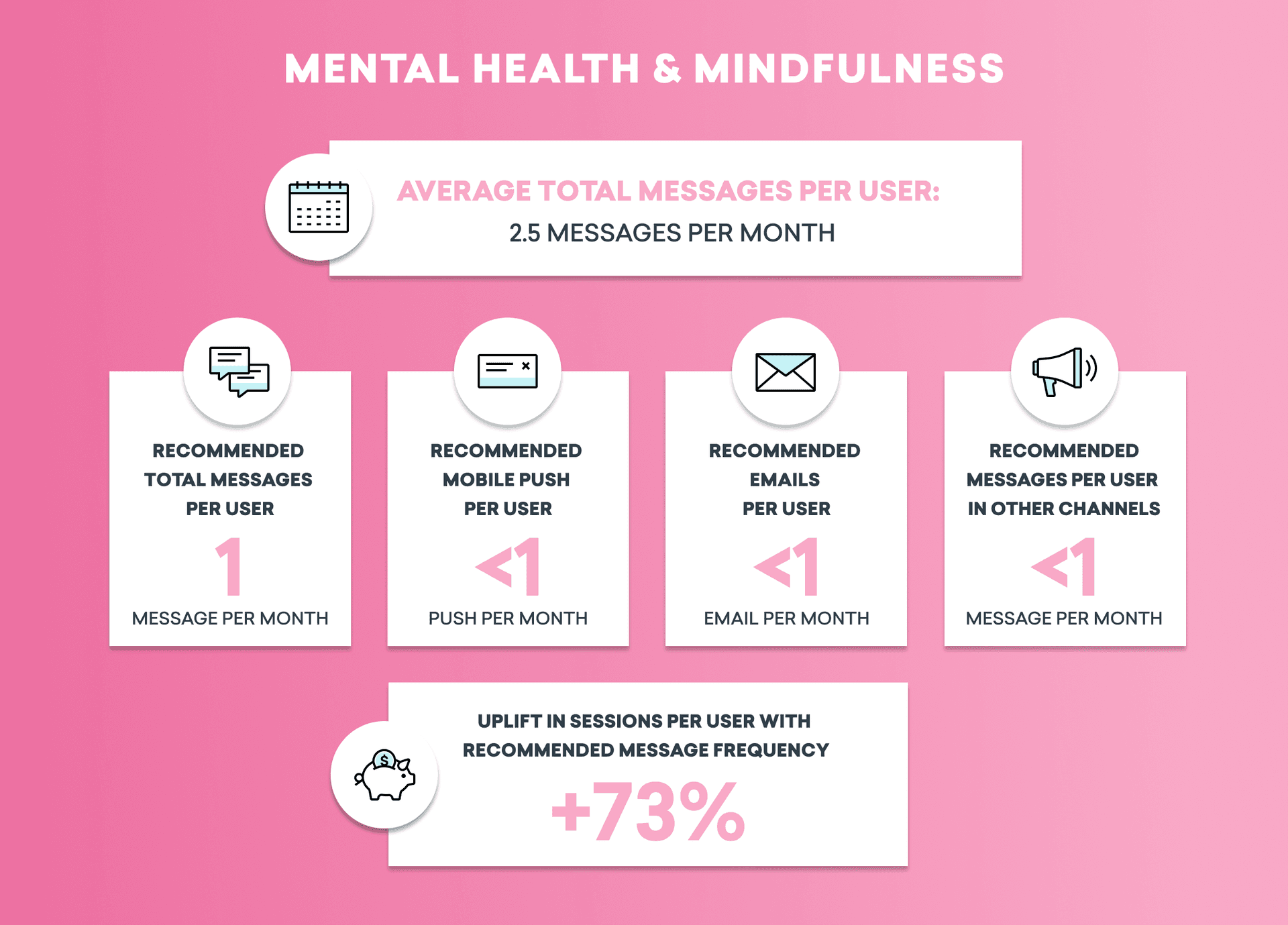
Having a healthy mind is just as important as having a healthy body! Fortunately, brands have been innovating to help people connect with mental health service providers, or to find their zen by developing an at home meditation practice. But when it comes to messaging, some of these brands could stand to emulate their users and just relax a little.
On average, brands send about 2.5 messagers per user per month, which is more than twice the recommended frequency of one message per user. Brands should be mindful of keeping their messaging sparse, as users who receive only one message per month engage in 73% more sessions than the average user.
Final Thoughts
Finding the right send frequency for your business can be a powerful thing, allowing you to strengthen engagement and even your overall customer/brand relationships. But it’s important to bear in mind that what’s right for your industry as a whole may not be right for your specific business and its customers.
The data we’re presenting here is a recommendation; a starting point, if you will. It may be that your company has a real need to send more messages than we’re suggesting here—or fewer, for that matter. Send frequency can be impacted by a variety of factors, from the constraints of your industry and what drives customer actions to other metrics that you may be observing or focusing on in addition to session engagement. So start with these numbers, but make sure to assess your own needs and results, test early and often, and make sure you’re optimizing your send frequency based on what you’re seeing on the ground.
Interested in learning more about average message performance? Check out our interactive Braze Benchmarks feature to dig deeper into key engagement metrics.
Be Absolutely Engaging.™
Sign up for regular updates from Braze.


